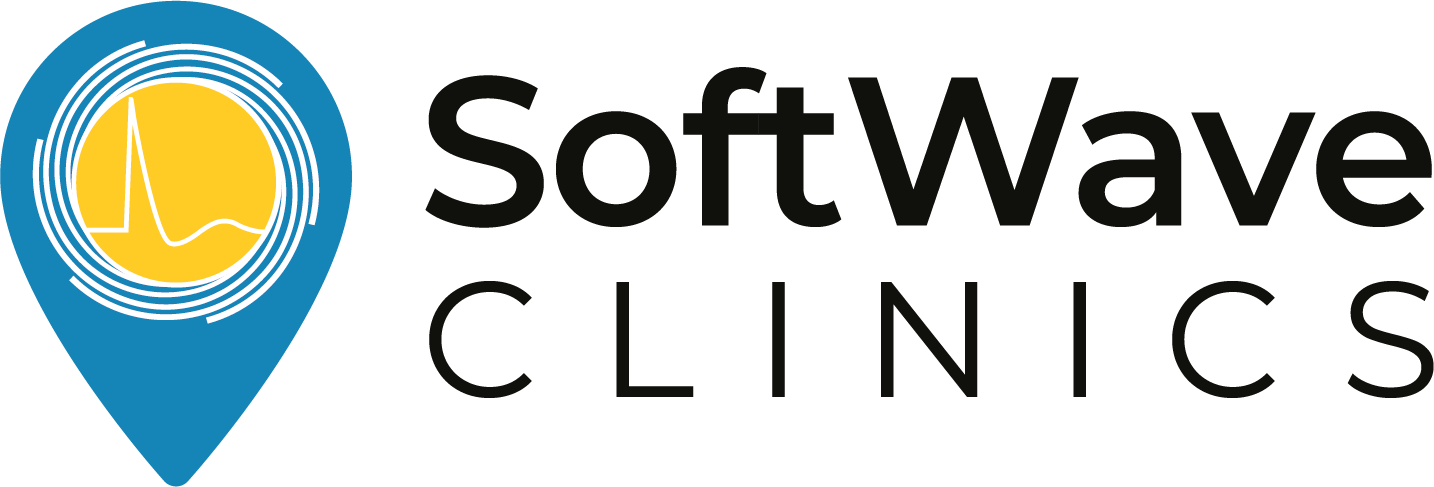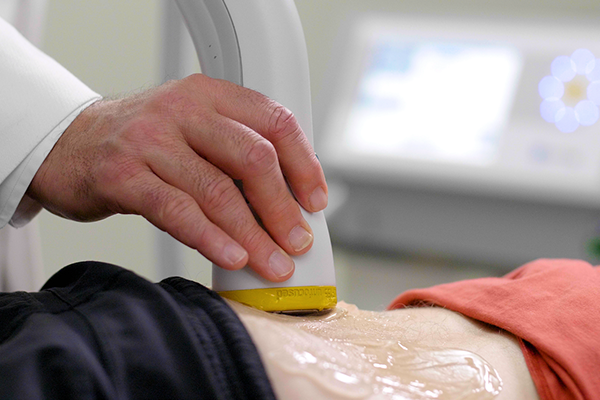Shockwave therapy has several different names depending on the type of sound waves used and the treatment focus. When it comes to understanding broad-focused vs. focused shockwave therapy, it helps to have a solid understanding of what shockwave therapy is and how it can help you.
Extracorporeal Shock Wave Therapy, or ESWT for short, is used to relieve pain and treat injuries that affect bones, joints, muscles, nerves, and other soft tissues. Initially popular among athletes, shockwave therapy is now widely used by individuals of all ages and walks of life.
Shockwave therapy continues to grow in popularity as an effective non-invasive treatment option for a variety of health conditions. ESWT is often recommended as a viable alternative to invasive procedures like surgery or prescription medications. By harnessing the power of sound waves, shockwave therapy stimulates the body’s natural healing processes and reaches deep tissues in the body.
When it comes to broad-focused shockwave therapy and focused shockwave therapy, it’s important to understand that each type is uniquely suited for specific injuries or conditions. Read on to learn more about which one might be best for you.
In this article we’ll cover:
What Is broad-focused Shockwave Therapy?
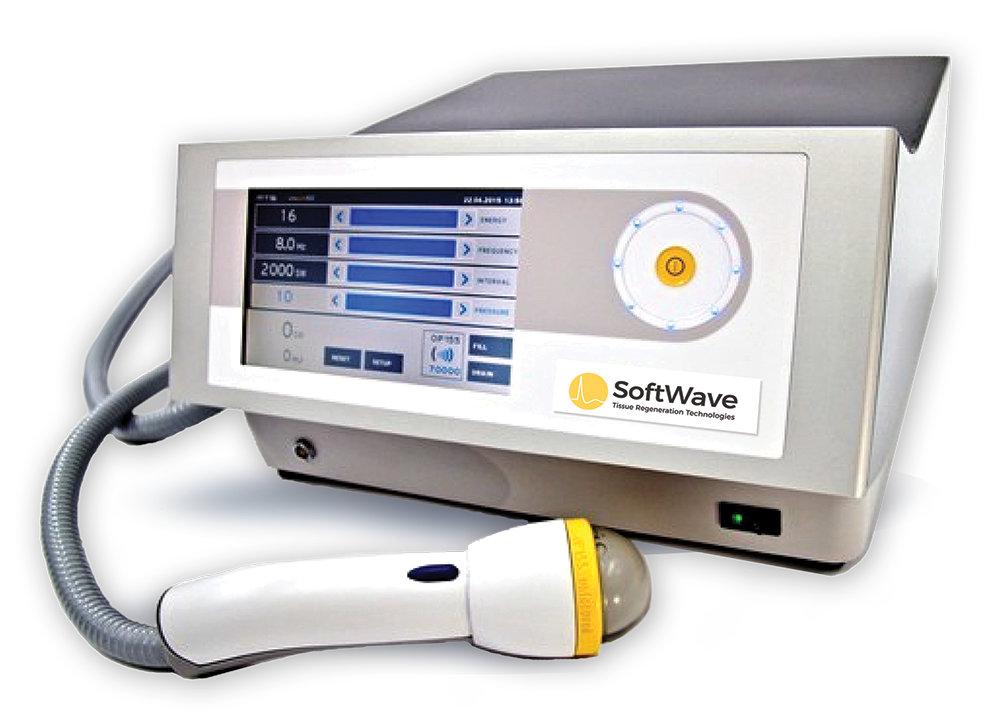
broad-focused shockwave therapy, also known as low intensity extracorporeal shockwave therapy (Li-ESWT), is a non-invasive treatment option that uses low-energy sound waves to stimulate the healing of injured or damaged tissue. broad-focused shockwaves are characterized by a wider distribution of energy over the treatment area, making them well-suited for treating broader, more diffuse conditions. They are also less intense, making them a good option for less severe injuries or those located closer to the surface of the skin.
Unlike other types of shock wave therapy, broad-focused shock wave therapy uses a smaller machine to transmit kinetic energy to the skin and offers the most benefits for people with skin conditions. broad-focused shockwave therapy works by stimulating the production of new blood vessels and promoting the healing of damaged tissue, which can improve healthy blood flow and reduce inflammation in the area.
broad-focused Shockwave Therapy is Good For*:
- Generalized Pain
- Soft Tissue Injuries
- Musculoskeletal Conditions
- Regeneration Therapy
*It’s important to note that the choice between broad-focused and focused shockwave therapy is made on a case-by-case basis and is determined by a healthcare professional based on their evaluation of the patient’s specific condition. Learn more about whether SoftWave can work for you.
Considering Shockwave Therapy?
Try SoftWave Therapy for just $69. Non-invasive healing that reaches deeper.
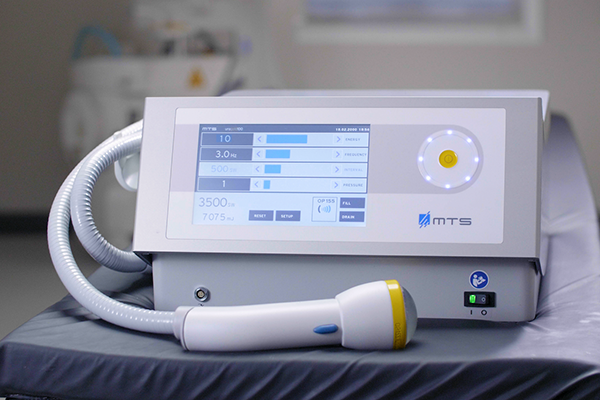
What Is Focused Shockwave Therapy?
Focused shockwaves deliver a concentrated and intense energy output, making them ideal for treating deep-seated conditions. They are also better suited for conditions that require a high-energy treatment approach, such as tumors or kidney stones. Focused sound waves are concentrated on a specific area rather than being transmitted over a larger area of the body, which makes for more localized attention. By treating defined points within the body with energy that reaches a certain depth, focused shockwave therapy offers more targeted features that affect tissues deeper within the body than broad-focused shockwave therapy.
Focused Shockwave Therapy is Good For*:
- Kidney/Gall Stones
- Cancer treatment
- Spinal cord injuries
- Brain tumors
- Uterine Fibroids
*It’s important to note that the choice between broad-focused and focused shockwave therapy is made on a case-by-case basis and is determined by a healthcare professional based on their evaluation of the patient’s specific condition. Learn more about whether SoftWave can work for you.
Similarities and Differences Between broad-focused vs. Focused Shock Wave Therapy
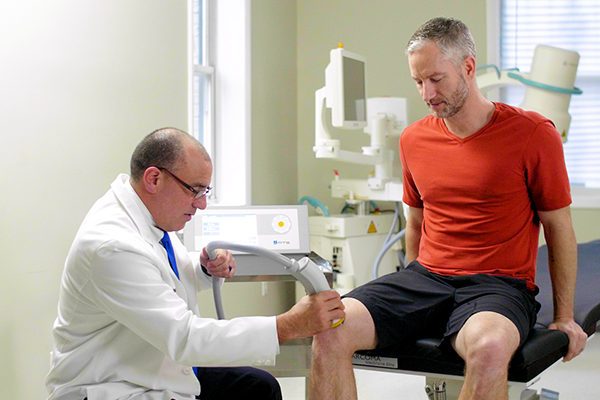
When comparing broad-focused and focused shockwave therapy, the key factors to consider are localization and penetration of the treatment. Both forms of shockwave therapy are non-invasive, utilizing high-energy sound waves to activate the body’s natural healing processes for injured or damaged tissue. Commonly used to treat a variety of musculoskeletal conditions, from chronic pain to recent injuries, broad-focused and focused shockwave therapy have both similarities and differences.
Depth & Area
The main difference between these two types of shock wave therapy has to do with the area of treatment. broad-focused shockwave therapy treats a larger area of the body, while focused shockwave therapy concentrates on a very specific area. Focused shockwaves penetrate deeper into tissues, making them more effective at breaking up unwanted tissues like tumors or kidney stones. The broad-focused nature of broad-focused waves, on the other hand, make them excellent at treating pain that occurs in a general area due to tissue dysfunction or injury.
Pain Treatment
broad-focused and focused shockwave therapy both harness the power of high-energy sound waves to stimulate the healing of damaged tissue. By promoting the body’s natural healing processes, new blood vessels are formed, improving blood supply and oxygenation to the affected area. This leads to faster healing and reduced pain.
Both broad-focused and focused shockwave therapy are non-invasive treatment alternatives to surgery or injections. However, the effectiveness of each type of shockwave therapy for pain will depend on the specific injury being treated. broad-focused shockwave therapy and focused shockwave therapy are each uniquely suited for specific injuries or conditions so choosing the right one for you will ensure you get maximal pain relief as quickly as possible.
Biological Effects
When it comes to understanding the biological effects of shockwave therapy, this type of treatment works by stimulating new blood vessel formation and promoting the healing of damaged tissues. Shockwave therapy can help improve blood flow in and around the treatment area. When blood flow to an injured area improves, this can help reduce inflammation and allow the body’s natural healing process to continue. Other biological effects of shockwave therapy include the production of proteins like collagen that help create firmer structures for connective tissues. Shockwave therapy can also be used to improve nerve function by stimulating the healing process for irritated or damaged nerve tissue.
How Many Sessions Are Needed for broad-focused vs. Focused Shock Wave Therapy
The number of shockwave sessions you may need will depend on a variety of factors. Some people experience almost immediate pain relief with shockwave therapy in just one or two sessions, while other people may have multiple treatments over the course of a few weeks before experiencing significant results. The type and severity of your pain and health condition will impact the number of sessions needed for broad-focused versus focused shock wave therapy. Meet with a healthcare provider who offers shockwave therapy to find out whether you’re a good candidate for this non-invasive treatment and what you can expect for a treatment timeline.
The Best Shockwave Therapy for Pain
Are you looking for safe, reliable, and effective relief from pain caused by soft tissue injuries and conditions?
SoftWave therapy is FDA-cleared, patented, and nationally recognized for its leading tissue regeneration technology. Unlike other types of high-energy shockwave treatments, SoftWave is the only shockwave therapy on the market that uses true broad-focused shock waves that treat larger and deeper areas of tissue.
Thousands of patient’s have experienced the benefits of SoftWave, including:
- Little to no side effects
- Short treatment time
- Quick recovery
- Long-lasting results
Find a provider at a SoftWave clinic near you or learn more about SoftWave and whether or not you’re eligible for full treatment today!
New Patient Special
Try SoftWave for just $69 at a clinic near you and learn if you’re a candidate for full treatment

